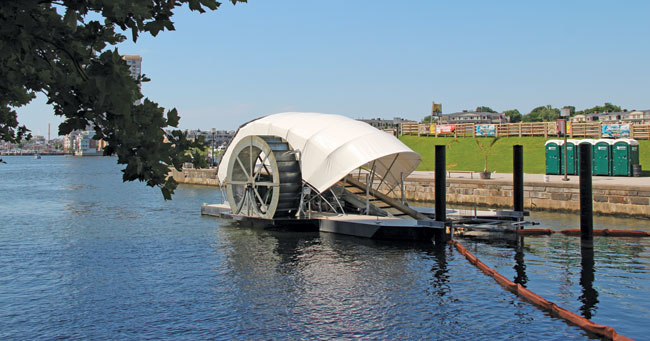
The industrial water wheel is making a comeback, not as power for New England gristmills but as collector of floating trash headed for a busy harbor. This one works a Baltimore waterway and is called the Inner Harbor Water Wheel.
With a white fabric roof like a covered wagon, the self-contained, waterborne contraption gathers debris from the Jones Falls River and guides it onto a conveyor belt that elevates it eight feet and feeds a dumpster on the back end. Water currents (augmented by solar panels, when needed) run the wheel, and the wheel in turn drives the conveyor, which collects up to 8,000 pounds of trash an hour. The daily catch ends up in a waste-to-energy plant and is burned for fuel.
John Kellett and Daniel Chase designed and built the wheel and are entertaining requests to take it to polluted waterways around the world. They plan first, though, to install webcam and Wi-Fi capabilities for remote monitoring and smartphone control.
Kellett, trained as an environmental scientist, says a hay-pitching machine on the farm where he grew up inspired the conveyor system. The slow-moving unit poses little threat to aquatic life because fish can outsmart it, he says. “If one got pulled up on the conveyer, which moves only six to eight feet per minute, it would have time to figure out how to swim away.”
Even at that leisurely pace, the Water Wheel is on track to intercept half a million pounds of garbage in its first year, making an environmental case for working smarter, not harder.


